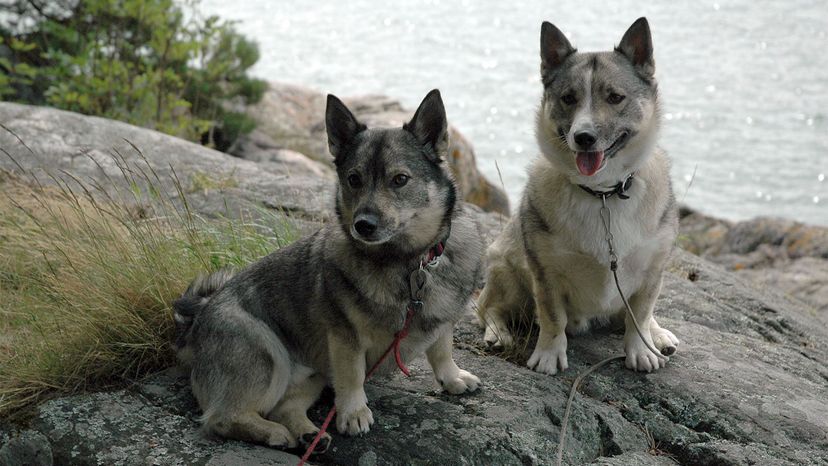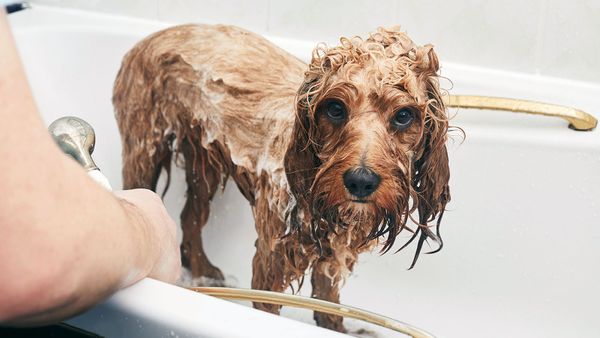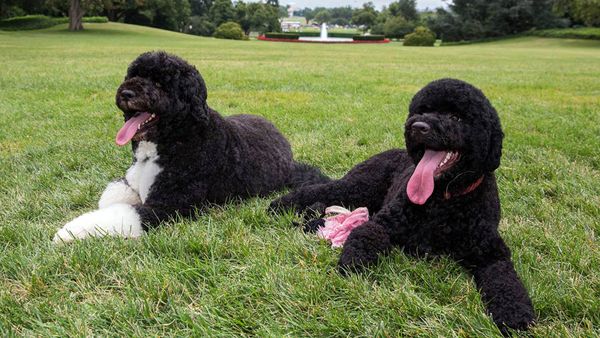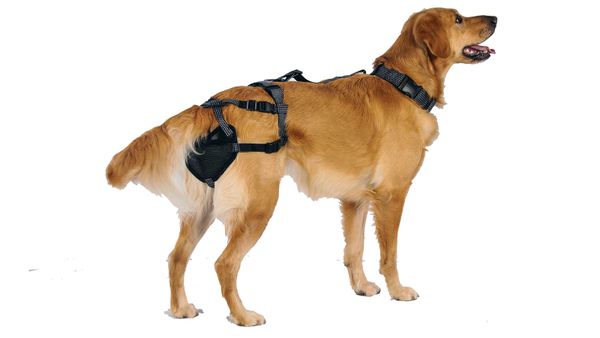Swedish Vallhunds are a type of spitz dog, which are generally known for erect ears, pointed muzzles, dense fur and plumed tails that curl upward to rest atop their spines. The wolfish shapes of spitz dogs remain consistent regardless of size or breed, from the tiny Pomeranian to the dignified Akita, with the Swedish Vallhund ranking somewhere in the middle for size. Their thick coats range in color from red to sable to gray.
Although Swedish Vallhunds often have plumed, curled tails, they are just as likely to be born with no tail at all or to have a bobbed tail, the result of natural genetic mutations. Those born with long tails may have them docked, with the breed standard focusing more on individual dog's physical and temperamental soundness than tail appearance.
A Swedish Vallhund typically has a high energy level. It loves to play, requires plenty of daily exercise (at least two hours!) and is known for its friendliness toward children. Thankfully, this boisterous breed also is easy to train because of its intelligence. Swedish Vallhunds are cheerful and usually friendly with other pets and can be quite vocal.
"There's a special sound Vallhunds make known as 'argle bargles,'" Sharon Steigerwald of upstate New York, who has two Swedish Vallhunds, says in an email interview. "It's hard to describe, but they talk to you with this 'argle bargle' to get something or just to say they are having a good time and they are happy."
Because of their need for mental and physical challenges, Swedish Vallhunds are ideal companions for those who frequently hike or jog, and the breed is adept at herding and agility games. Keep in mind, though, that this herding instinct doesn't always translate well to modern life. Swedish Vallhunds are prone to chasing any kind of moving object, including cars, which means they need plenty of obedience training for their own safety.



